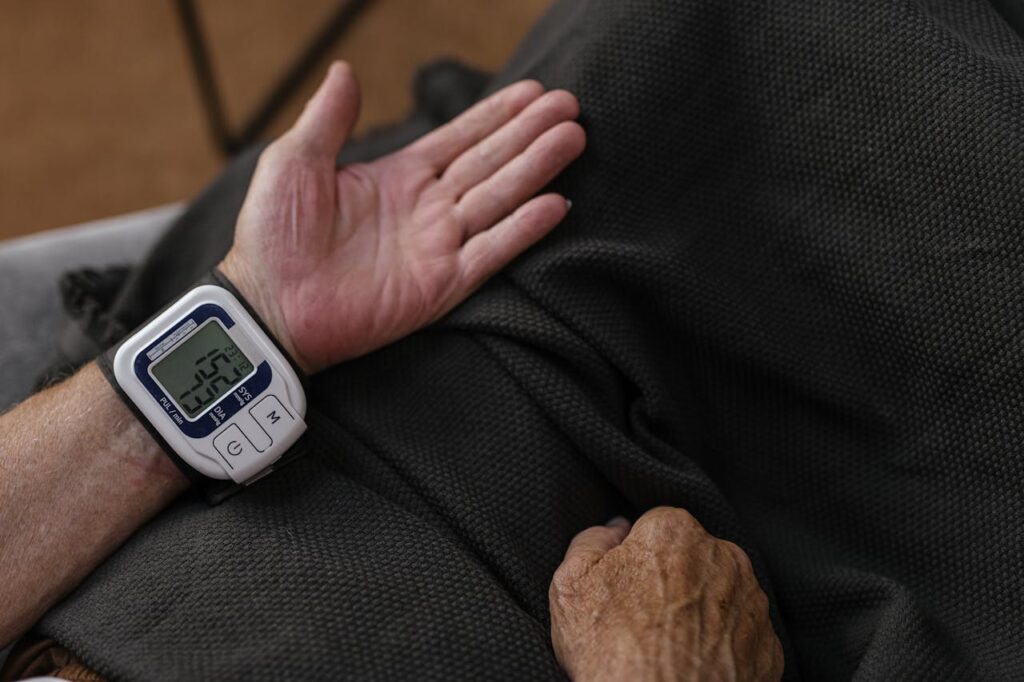If you’ve ever wondered whether cardio can help you achieve a flatter stomach, you’re not alone. Many people are curious to know if the popular exercise method can truly deliver the desired results. Well, the answer may just surprise you. In this article, we’ll explore the relationship between cardio and stomach flattening, shedding light on whether this exercise can indeed help you attain a toned midsection. Let’s dive in and uncover the truth about cardio and its impact on your stomach!
The Relationship Between Cardio and Stomach Flattening
Understanding the Concept
When it comes to achieving a flat stomach, many people wonder about the role of cardiovascular exercise, commonly known as cardio. While cardio alone may not directly flatten your stomach, it plays a significant role in aiding weight loss and reducing overall body fat, including stubborn belly fat. Understanding the relationship between cardio and stomach flattening requires exploring the various factors that contribute to achieving a toned midsection.
The Role of Cardiovascular Exercise
Cardiovascular exercise refers to any activity that elevates your heart rate and increases oxygen circulation throughout your body. It includes exercises such as running, cycling, swimming, and dancing. While cardio primarily focuses on improving cardiovascular health, it also helps burn calories and stimulates the metabolism, indirectly contributing to stomach flattening.
Factors Affecting Stomach Flattening
Several factors can affect the effectiveness of cardio in achieving a flat stomach. Genetics and body composition play a role in determining how fat is distributed in the body, including the abdomen. Hormonal influences, such as imbalances in cortisol levels due to stress, can also impact fat distribution. Age and metabolism can affect how the body burns calories and stores fat, making it harder to achieve a flat stomach as we get older. Additionally, lifestyle habits and stress levels can affect overall weight and body composition.
The Importance of Diet
While cardio is a crucial component of achieving a flat stomach, it should be combined with a healthy and balanced diet. Caloric deficit, meaning consuming fewer calories than you burn, is essential for weight loss and reducing stomach fat. Choosing nutrient-dense foods that are low in saturated fats, sugars, and processed carbohydrates can aid in creating the calorie deficit needed for stomach flattening. Portion control is also important to ensure that you are not overeating, even if you are engaging in regular cardio exercise.
Muscle Strengthening Exercises
Cardio alone may not provide the desired results in terms of achieving a toned and flat stomach. It is equally important to incorporate muscle strengthening exercises to target and strengthen the abdominal muscles. Building a strong core can improve posture, stability, and overall body strength, providing a solid foundation for a flat stomach. Combining cardio with exercises like planks, crunches, and leg raises can enhance abdominal definition and contribute to a flatter stomach.
Cardiovascular Exercise for Burning Calories
Types of Cardio Exercises
Cardio exercises encompass a wide range of activities that can be tailored to individual preferences and fitness levels. Some popular options include jogging, brisk walking, cycling, swimming, dancing, and aerobics. It is important to choose an exercise that you enjoy and can sustain over time to reap the maximum benefits.
Calories Burned during Cardio Workouts
The number of calories burned during cardio workouts depends on various factors, including the intensity and duration of the exercise, body weight, and fitness level. Higher intensity activities like running or cycling at a fast pace burn more calories than low-intensity activities like walking or gentle swimming. On average, a person weighing 160 pounds can burn approximately 314 calories during a 30-minute jog at a moderate pace.
The Role of Cardio in Weight Loss
Cardiovascular exercise plays a key role in weight loss by contributing to a calorie deficit. By increasing your heart rate and engaging large muscle groups, cardio workouts burn calories and fat. When combined with a healthy diet, cardio can help create the necessary calorie deficit for sustainable weight loss. It is important to note that in order to lose weight, the calories burned through cardio exercise should exceed the calories consumed through food and beverages.
Calorie Deficit and Stomach Fat
While cardio exercise can burn calories and aid in weight loss, it is important to understand that spot reduction, specifically targeting fat in one area of the body, is not possible. When you engage in cardio exercises, your body burns calories from various sources, including fat stores. Over time, as the body burns calories and reduces overall body fat, including the fat around the stomach, a flatter stomach can be achieved. Creating a calorie deficit through a combination of cardio exercise and a balanced diet is key to reducing stomach fat.
Benefits of Cardio for Abdominal Fat Reduction
Improved Overall Body Fat Percentage
Cardiovascular exercise has been shown to improve overall body fat percentage. Regular cardio workouts combined with a balanced diet can lead to a decrease in overall body fat, including abdominal fat. As your body fat percentage decreases, your stomach will naturally flatten over time.
Increased Caloric Expenditure
Cardio workouts elevate your heart rate and help you burn more calories during and even after the exercise session. High-intensity cardio exercises such as interval training can significantly increase your metabolic rate, leading to increased caloric expenditure even at rest. This increased calorie burn contributes to weight loss and overall stomach flattening.
Cardiovascular Health Benefits
In addition to weight loss and stomach flattening, cardio exercises have numerous cardiovascular health benefits. Regular cardio workouts can lower blood pressure, reduce the risk of heart disease and stroke, improve circulation, and strengthen the heart muscle. By improving your heart health, cardio exercise supports overall well-being and reduces the risk of cardiovascular-related abdominal issues.

Boosting Metabolism
Cardio exercises help boost your metabolism, which is the rate at which your body burns calories. As your metabolic rate increases, your body becomes more efficient at burning calories throughout the day, even when you are at rest. This increased calorie burn can contribute to stomach flattening by aiding in overall weight loss and reducing fat accumulation.
Targeting Stubborn Belly Fat
One of the most common goals when it comes to stomach flattening is getting rid of stubborn belly fat. While spot reduction is not possible, cardio exercises can help reduce overall body fat, including the fat around the stomach. By engaging in regular cardio workouts, you can increase your chances of losing belly fat and achieving a flatter stomach.
Cardio and Abs: Strengthening Core Muscles
Core Muscles and Their Importance
A strong core is essential for overall stability, posture, and physical performance. The core muscles include the rectus abdominis (the “six-pack” muscles), transverse abdominis, internal and external obliques, and the erector spinae. Engaging and strengthening these muscles is crucial for maintaining proper form during cardio exercises and other physical activities.
Engaging Core Muscles during Cardio
While cardio mainly focuses on elevating the heart rate and burning calories, it is possible to engage and strengthen the core muscles during these workouts as well. Activities like running, swimming, and cycling require core stability and can naturally engage the abdominal muscles. To further enhance core engagement, you can focus on maintaining good posture, pulling the belly button towards the spine, and engaging the abdominal muscles throughout your cardio workouts.
Exercises for Strengthening the Abdominal Muscles
To achieve a truly flat and toned stomach, it is important to incorporate exercises specifically targeting the abdominal muscles. In addition to cardio, exercises like planks, crunches, Russian twists, and leg raises can strengthen and define the abdominal muscles. These exercises should be performed in addition to regular cardio workouts to maximize the benefits and enhance overall core strength and definition.
Enhancing Abdominal Definition
By combining cardio exercises with specific core strengthening exercises, you can enhance the definition and toning of your abdominal muscles. While cardio alone can help reduce overall body fat, including belly fat, targeted abdominal exercises provide the necessary stimulus to sculpt and define the muscles underneath. This combination of cardio and core exercises is key to achieving a flat and sculpted stomach.
Effective Cardio Strategies for Flattening the Stomach
High-Intensity Interval Training (HIIT)
High-Intensity Interval Training, commonly known as HIIT, is a popular and effective cardio strategy for stomach flattening. HIIT involves alternating between short periods of high-intensity exercise and periods of active recovery. This type of workout not only burns a significant number of calories in a shorter time but also increases the metabolic rate for hours after the workout, leading to improved fat burning and stomach flattening.
Aerobic Exercises for Burning Fat
Aerobic exercises, also known as endurance exercises, are an excellent choice for burning calories and promoting weight loss. Activities like jogging, swimming, and cycling at a steady pace for an extended period engage the aerobic energy system and utilize fat stores as a fuel source. By consistently engaging in aerobic exercises, you can create a calorie deficit and contribute to overall stomach flattening.
Combining Cardio with Strength Training
To maximize the benefits of cardio for stomach flattening, it is recommended to combine it with strength training exercises. Strength training helps build lean muscle mass, which in turn increases the metabolic rate and contributes to calorie burn. By incorporating exercises like weightlifting or bodyweight exercises into your routine, you can build muscle, reduce body fat, and achieve a flat stomach.
Variety and Progression in Cardio Workouts
To prevent plateaus and maintain motivation, it is important to incorporate variety and progression into your cardio workouts. Trying different types of cardio exercises, such as swimming one day and running the next, not only keeps your workouts interesting but also challenges your body in different ways. Additionally, progressively increasing the intensity or duration of your workouts can help improve cardiovascular fitness and maximize calorie burn for stomach flattening.
The Role of Diet and Nutrition
Caloric Deficit and Weight Loss
Diet and nutrition play a crucial role in achieving a flat stomach through cardio exercise. To lose weight and reduce stomach fat, it is important to create a calorie deficit by consuming fewer calories than you burn. This can be achieved by making healthier food choices, controlling portion sizes, and being mindful of calorie intake. By combining a calorie deficit with regular cardio workouts, you can achieve sustainable weight loss and contribute to stomach flattening.
Choosing Nutrient-Dense Foods
While creating a calorie deficit is important, it is equally important to focus on the quality of the calories consumed. Opting for nutrient-dense foods, such as fruits, vegetables, lean proteins, whole grains, and healthy fats, ensures that your body is receiving essential nutrients while promoting overall health. These foods provide the necessary energy for cardio workouts and support muscle recovery and development.
Importance of Portion Control
Even when consuming nutrient-dense foods, portion control is key to achieving a flat stomach. Overeating, even on healthy foods, can lead to an excess intake of calories and hinder weight loss efforts. Being mindful of portion sizes and listening to your body’s hunger and fullness cues can help you maintain a calorie deficit and support stomach flattening.
Balancing Macronutrients
In addition to portion control, it is important to strike a balance between macronutrients – carbohydrates, proteins, and fats – to support overall health and fitness goals. Carbohydrates provide energy for cardio workouts, proteins support muscle development and recovery, and healthy fats aid in nutrient absorption and satiety. Consulting with a registered dietitian can help create a personalized meal plan that meets your specific nutritional needs.
Hydration and its Impact
Proper hydration is often overlooked but plays a significant role in overall health and weight management. Drinking an adequate amount of water not only supports cardiovascular function, temperature regulation, and nutrient absorption but also helps control appetite and prevent overeating. Staying hydrated is particularly important when engaging in cardio exercise as it helps prevent dehydration and supports optimal performance.
Addressing Potential Limitations and Risks
Individual Variations in Stomach Flattening
It is important to recognize that individuals may vary in their ability to achieve a flat stomach through cardio exercise. Factors such as genetics, body composition, and previous abdominal surgeries can impact the rate and extent of stomach flattening. It is essential to focus on overall health and body strength rather than solely on external appearance. Emphasizing progress rather than perfection can help maintain motivation and create a positive mindset towards physical fitness.
Balancing Cardio and Recovery
While cardio exercise is beneficial for stomach flattening, it is crucial to allow the body enough time for rest and recovery. Overtraining and not allowing sufficient recovery time can lead to burnout, muscle fatigue, and increased risk of injuries. Incorporating rest days and giving your body time to recover between intense cardio sessions is essential for long-term progress and overall well-being.
Potential Overuse Injuries
Engaging in excessive amounts of cardio exercise, especially high-impact activities such as running or jumping, can increase the risk of overuse injuries. Common injuries include stress fractures, tendonitis, and muscle strains. It is important to listen to your body, pay attention to any signs of pain or discomfort, and vary your exercise routine to minimize the risk of overuse injuries. Incorporating strength training and low-impact exercises can help maintain a balanced approach to cardio workouts.
Monitoring Heart Health
Cardiovascular exercise places stress on the heart, making it important to monitor heart health, especially for individuals with pre-existing conditions. It is recommended to consult with a healthcare professional before starting any new exercise program, especially if you have cardiovascular concerns. Regular check-ups, monitoring heart rate during exercise, and following any necessary precautions or modifications can help ensure safe and effective cardio workouts.
Consulting with a Healthcare Professional
Before embarking on any fitness or weight loss journey, it is always wise to consult with a healthcare professional. They can evaluate your overall health and provide personalized recommendations based on your individual needs and goals. A healthcare professional can help you create a well-rounded plan that combines cardio, strength training, and a balanced diet to achieve a flat stomach in a safe and sustainable manner.
Articles You May Also Like
Factors that Can Impact Stomach Flattening
Genetics and Body Composition
Different individuals have varying genetic predispositions when it comes to fat distribution. Some people may naturally carry more fat around their stomachs, making it more challenging to achieve a flat stomach through cardio exercise alone. Body composition, including the ratio of muscle to fat, also plays a role in stomach flattening. Individuals with higher muscle mass tend to have more toned stomachs, even if they still have some fat in that area.
Hormonal Influences on Fat Distribution
Hormones can impact fat distribution in the body, including around the stomach. For example, imbalances in cortisol, the stress hormone, can lead to increased fat storage in the abdominal area. Hormonal changes during menopause can also contribute to increased fat accumulation in the stomach region. While cardio exercise can help reduce overall body fat, addressing hormonal imbalances may require additional medical interventions or lifestyle modifications.
Effects of Age and Metabolism
Age and metabolism can affect how the body burns calories and stores fat. As individuals age, there is often a natural decrease in muscle mass and an increase in body fat percentage. This can make it more challenging to achieve a flat stomach through cardio exercise alone. However, regular cardio workouts combined with strength training can help counteract age-related changes, increase metabolism, and promote stomach flattening.
Lifestyle Habits and Stress Levels
Lifestyle habits and stress levels can significantly impact stomach fat and overall weight. Sedentary lifestyles, excessive alcohol consumption, and poor sleep quality can all contribute to weight gain, including in the abdominal area. Additionally, chronic stress causes the body to release cortisol, which can promote fat storage around the stomach. Combining regular cardio exercise with healthy lifestyle choices, stress management techniques, and sufficient sleep can support stomach flattening.
Conclusion
Cardiovascular exercise plays a vital role in achieving a flat stomach and overall health and fitness. While cardio alone may not directly flatten your stomach, it contributes to weight loss, reducing overall body fat, and increasing caloric expenditure. By creating a calorie deficit through a combination of cardio workouts and a balanced diet, you can achieve sustainable weight loss and contribute to stomach flattening. Incorporating core-strengthening exercises, maintaining a balanced approach to cardio workouts, and addressing potential limitations and risk factors can further enhance your progress. It is important to consult with a healthcare professional and focus on overall health and well-being rather than solely on external appearance. By combining cardio with strength training, proper nutrition, and healthy lifestyle habits, you can maintain a sustainable fitness routine and work towards achieving and maintaining a flat stomach.





One thought on “Does cardio flatten your stomach?”
Comments are closed.